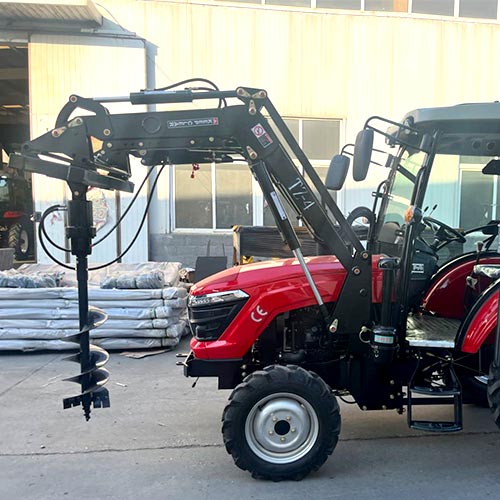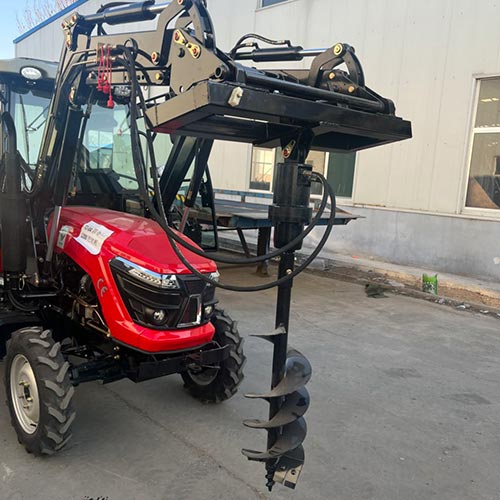Introduction
Investing in a front auger for your tractor can significantly enhance its capabilities for various agricultural and industrial tasks. However, selecting the right front auger requires careful consideration of several factors to ensure optimal performance and compatibility with your tractor. In this comprehensive guide, we will explore the key factors to consider when choosing a front auger for your tractor, as well as provide recommendations for top picks based on performance, durability, and versatility.
Understanding Front Augers and Their Applications

Before embarking on the journey of selecting the ideal front auger for your tractor, it’s imperative to grasp a comprehensive understanding of what front augers entail and the myriad ways they can augment tractor operations. Front augers, also known as front-mounted augers or front-end augers, are pivotal attachments meticulously engineered to facilitate a multitude of tasks across various sectors. Their design typically comprises a robust auger mechanism affixed to the front of the tractor, driven by either hydraulic or power take-off (PTO) systems, depending on the specific model and configuration. This versatile design empowers front augers to excel in a wide array of applications, spanning the realms of agriculture, construction, and landscaping alike. In agriculture, front augers prove invaluable for tasks such as loading and unloading grain bins, transporting bulk materials, and handling feed for livestock operations. Their ability to swiftly and efficiently transfer materials directly from the ground or storage facilitates seamless workflow and enhances operational efficiency on the farm.
Moreover, in the construction industry, front augers are indispensable tools for excavating and transferring materials such as gravel, sand, and soil, streamlining construction projects and minimizing manual labor requirements. Additionally, front augers find extensive use in landscaping endeavors, where they excel in tasks such as backfilling trenches, spreading mulch, and grading surfaces with precision and finesse. Their versatility and adaptability make them indispensable assets for landscaping professionals seeking to achieve immaculate results in their projects. In essence, front augers represent a cornerstone of modern tractor operations, offering unparalleled versatility, efficiency, and performance across diverse applications. Understanding their design and multifaceted capabilities is paramount for harnessing their full potential and unlocking new possibilities in tractor-based tasks and projects.
Factors to Consider When Choosing a Front Auger
Selecting the optimal front auger for your tractor entails a thorough evaluation of several key factors, each of which plays a critical role in determining its suitability and performance. Among these factors, size stands as a fundamental consideration, encompassing both the physical dimensions of the auger itself and its compatibility with your tractor’s specifications. The size of the front auger must align with the dimensions of your tractor, ensuring seamless integration and optimal functionality. Additionally, capacity emerges as a pivotal factor, dictating the volume of material the front auger can handle effectively. Assessing your specific workload requirements and anticipated usage patterns will guide you in determining the ideal capacity for your needs, striking a balance between efficiency and productivity.
Compatibility represents another essential aspect to consider, encompassing not only the physical compatibility between the front auger and your tractor but also the compatibility of their respective hydraulic or PTO systems. Ensuring compatibility between these components is paramount for seamless operation and optimal performance. Finally, features play a crucial role in enhancing the functionality and versatility of the front auger. From adjustable height settings to hydraulic or PTO drive options, the presence of advanced features can significantly augment the effectiveness and efficiency of the front auger for your tractor. By meticulously evaluating each of these factors and their interplay, you can make an informed decision that maximizes the effectiveness and efficiency of the front auger for your specific tractor and operational requirements.
Top Picks: Recommended Front Augers for Tractors
Drawing upon thorough research and in-depth industry knowledge, we have meticulously curated a selection of top-tier front augers renowned for their exceptional performance, rugged durability, and unparalleled versatility. These elite front augers have been handpicked based on rigorous criteria, ensuring they meet the rigorous demands of tractor owners across various sectors. Our curated list showcases each recommended front auger, offering a comprehensive overview of its standout features, specifications, and the myriad benefits it brings to tractor operators. From cutting-edge design elements to advanced functionalities, each front auger on our list has been rigorously vetted to guarantee superior performance and reliability in real-world applications. Whether you’re seeking enhanced efficiency in agriculture, construction, or landscaping endeavors, our top picks represent the pinnacle of front auger technology, delivering unmatched value and utility to discerning tractor owners. Join us as we delve into the realm of elite front augers, exploring their key attributes and highlighting the unique advantages they offer to tractor operators seeking to elevate their productivity and streamline their operations.
Installation and Compatibility Considerations

Pre-Installation Assessment: Before beginning the installation process, thoroughly assess your tractor’s front-end configuration and specifications. Take note of any existing attachments, such as front loaders or weight brackets, that may need to be removed or repositioned to accommodate the front auger.
Compatibility Verification: Ensure that the selected front auger is compatible with your tractor’s make and model. Refer to the manufacturer’s specifications and guidelines to verify compatibility, including compatibility with hydraulic systems, PTO (Power Take-Off) requirements, and weight capacity.
Installation Preparation: Gather all necessary tools and equipment for the installation process, including hydraulic hoses, mounting hardware, and any additional components specified by the front auger manufacturer. Clear the work area of any obstructions and ensure adequate space for maneuvering the tractor and auger assembly.
Mounting and Attachment: Carefully position the front auger in front of the tractor, aligning it with the mounting brackets or attachment points. Securely fasten the auger to the tractor using the provided mounting hardware, ensuring that all bolts are tightened to the manufacturer’s specifications to prevent any potential for movement or detachment during operation.
Hydraulic Connections: Connect the hydraulic hoses from the front auger to the tractor’s hydraulic system, following the color-coded or labeled connections as specified in the installation manual. Check for proper alignment and secure connections to prevent leaks or hydraulic malfunctions during operation.
Safety Precautions: Prioritize safety throughout the installation process by adhering to all safety guidelines provided by the manufacturer. Ensure that all safety shields, guards, and protective covers are properly installed and secured to prevent any potential hazards or accidents during operation.
Operational Testing: Once the front auger is installed, conduct thorough operational testing to ensure proper functionality and performance. Test the auger’s rotation, hydraulic functions, and any additional features to verify smooth operation and compatibility with your tractor.
Final Adjustments: Make any necessary adjustments or fine-tuning to optimize the performance of the front auger in conjunction with your tractor. This may include adjusting hydraulic flow rates, fine-tuning attachment angles, or making minor modifications to ensure seamless operation and efficiency.
Maintenance Tips for Front Augers
Maintaining your front auger is essential for prolonging its lifespan and ensuring continued reliability and performance. This section will offer practical maintenance tips and best practices for keeping your front auger in top condition.
| Maintenance Task | Description |
|---|---|
| Regular Inspection | Conduct routine visual inspections of the front auger, checking for signs of wear, damage, or loose components. |
| Lubrication | Ensure that all moving parts are adequately lubricated according to the manufacturer’s recommendations. |
| Cleaning | Keep the front auger clean from debris, dirt, and residue, especially after each use, to prevent buildup and corrosion. |
| Blade Replacement | Replace worn or damaged blades as needed to maintain optimal cutting performance and prevent excessive strain on the auger. |
| Hydraulic System Check | Regularly inspect hydraulic hoses, fittings, and connections for leaks, cracks, or signs of wear, and address any issues promptly. |
| Grease Fittings | Apply grease to fittings as recommended by the manufacturer to ensure smooth operation and prevent premature component failure. |
| Storage | Store the front auger in a dry, sheltered location when not in use, preferably indoors, to protect it from the elements and minimize rust and corrosion. |
| Professional Servicing | Schedule periodic professional servicing and maintenance checks to identify any potential issues early and keep the auger in optimal working condition. |
Conclusion
Choosing the right front auger for your tractor is a crucial decision that can significantly impact your efficiency and productivity in various tasks. By considering factors such as size, capacity, compatibility, and features, as well as exploring top picks and following installation and maintenance guidelines, you can make an informed decision that maximizes the performance and value of your tractor investment.
FAQ
Q: Can I use a front auger for tasks other than agriculture?
A: Yes, front augers are versatile attachments that can be used for various applications, including snow removal, landscaping, and construction.
Q: How do I determine the right size of front auger for my tractor?
A: The size of the front auger you need depends on factors such as your tractor’s horsepower, hydraulic capacity, and the intended application. Refer to the manufacturer’s guidelines and consult with experts to ensure proper sizing.
Q: What features should I look for in a front auger for my tractor?
A: When choosing a front auger, consider features such as adjustable height, hydraulic or PTO drive options, heavy-duty construction, and compatibility with your tractor model. Evaluate your specific needs and prioritize features that will enhance performance and versatility.

